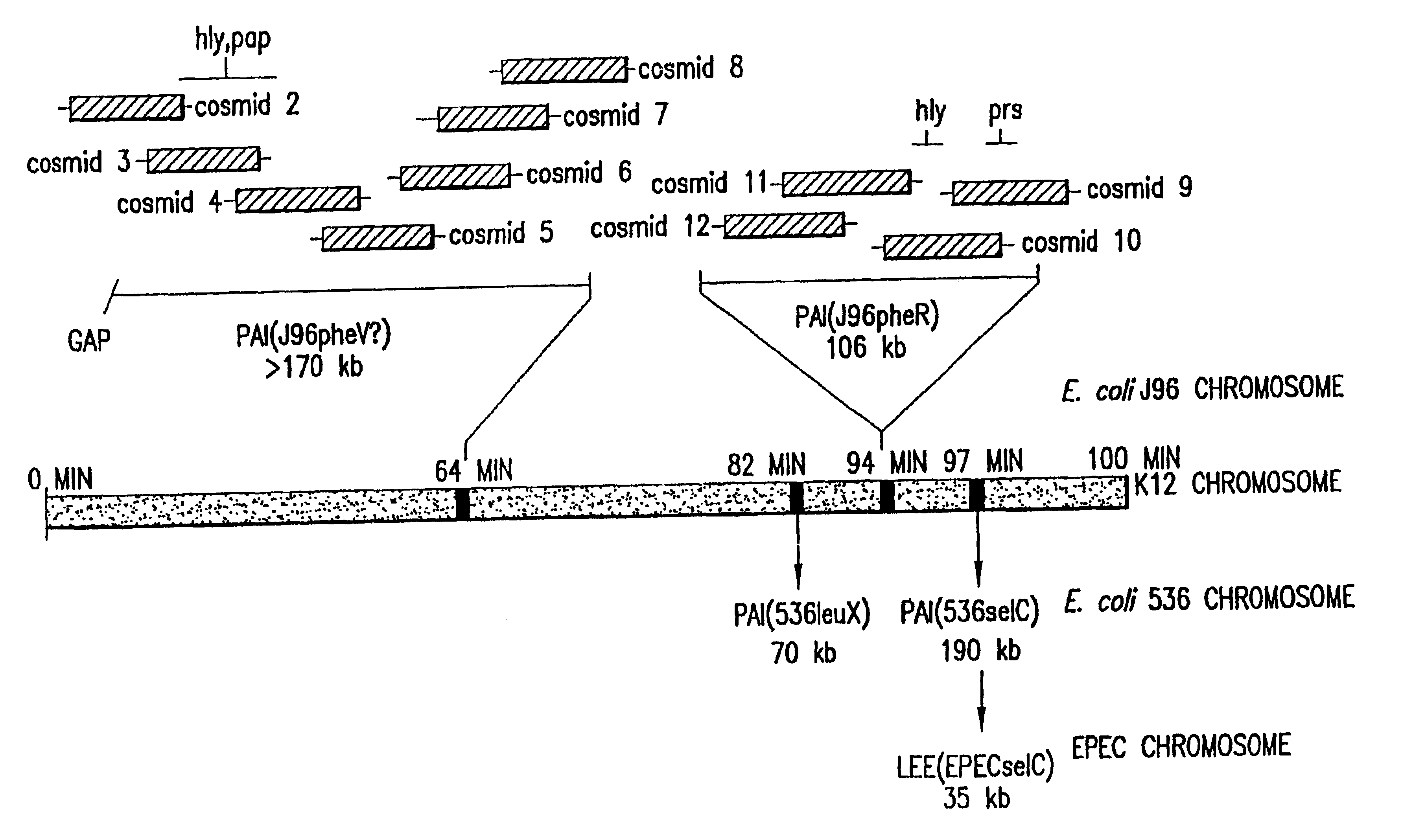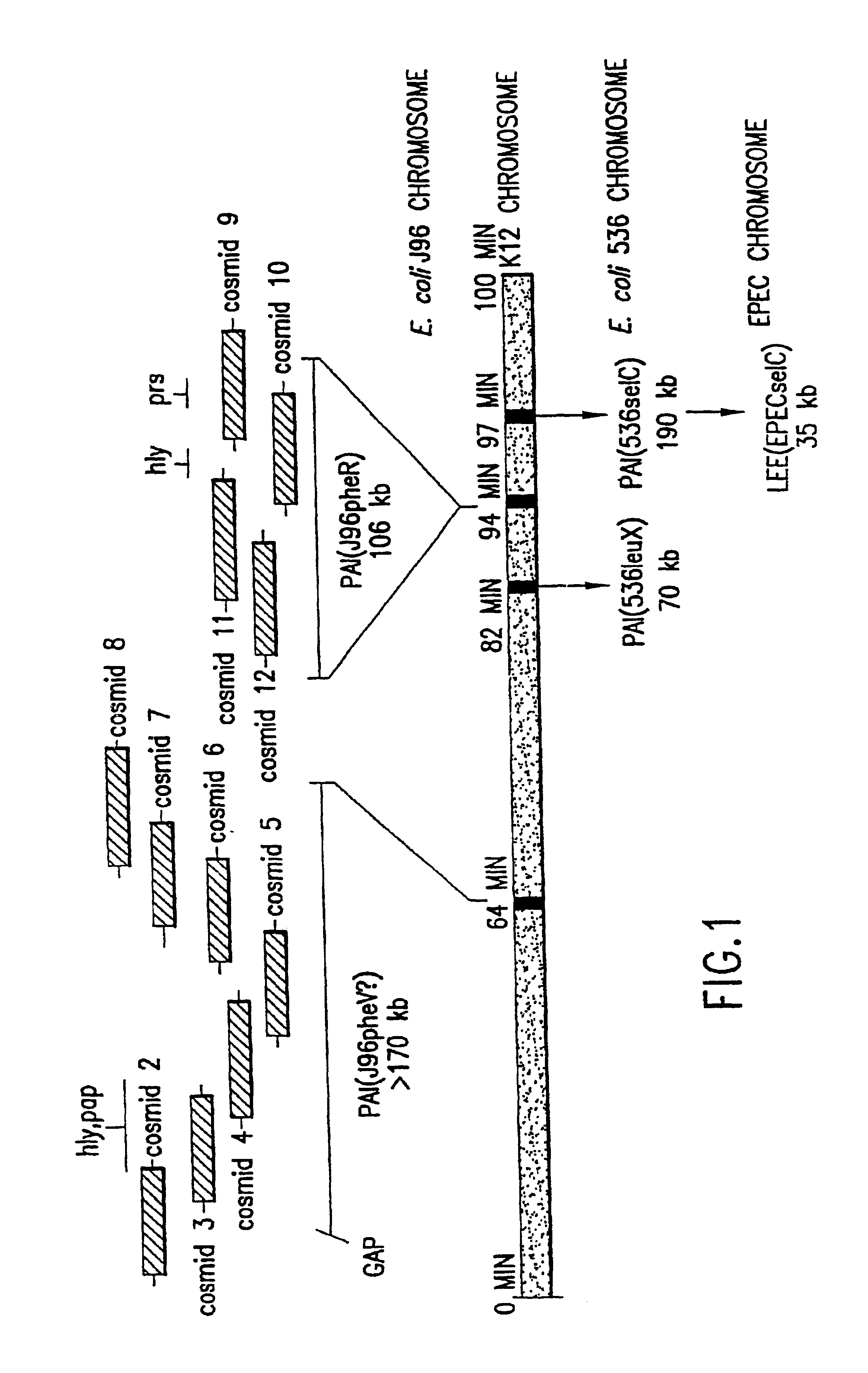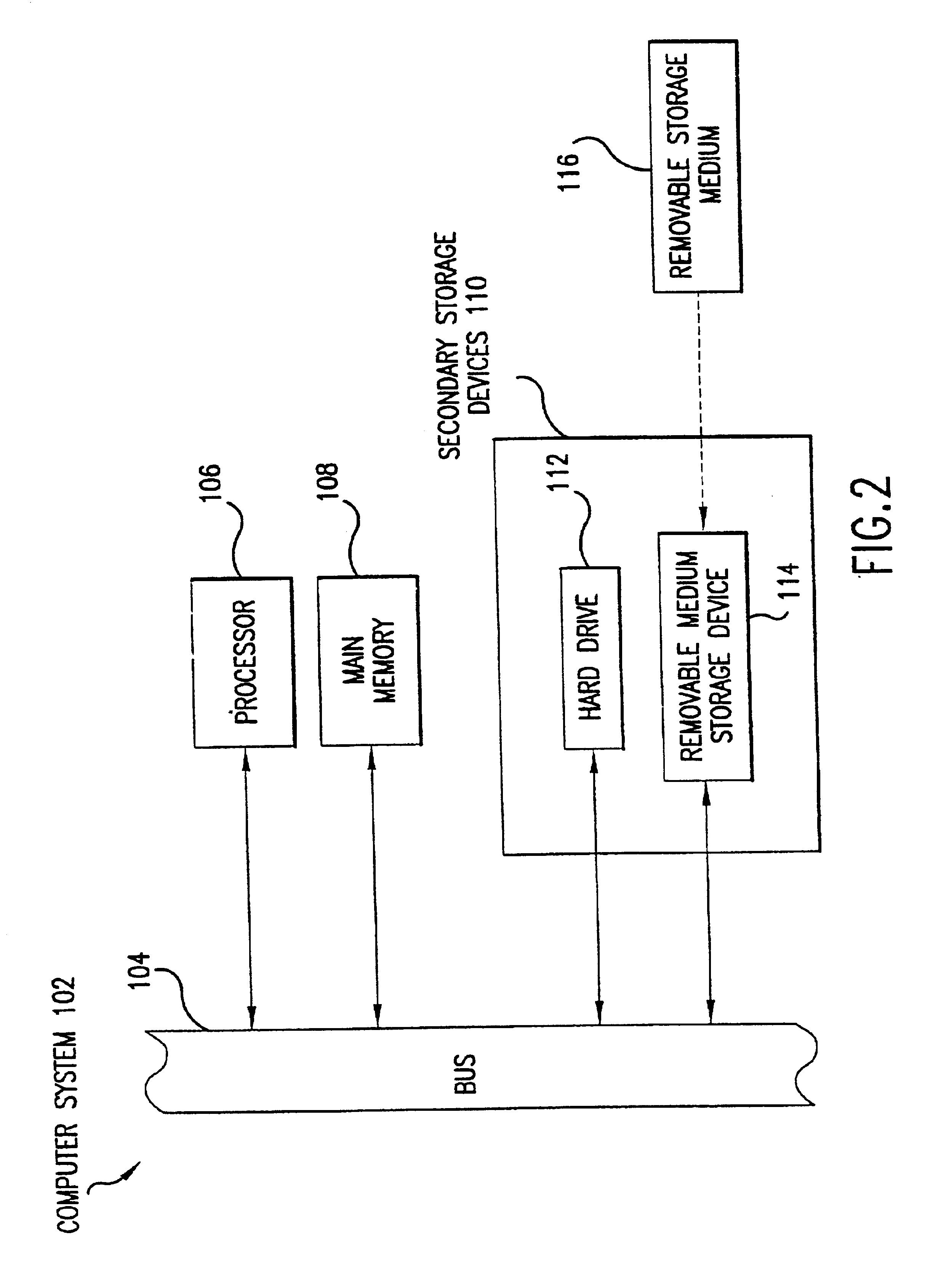Nucleotide sequence of Escherichia coli pathogenicity islands
a technology of escherichia coli and nucleotide sequence, which is applied in the field of nucleotide sequence of escherichia coli pathogenicity islands, can solve the problems of loss of activity, type of residue may be completely unimportant, and unimportant residue types
- Summary
- Abstract
- Description
- Claims
- Application Information
AI Technical Summary
Benefits of technology
Problems solved by technology
Method used
Image
Examples
example 1
High Through-Put Sequencing of Cosmid Clones Covering PAI IV and PAI V in E. coli J96
The complete DNA sequence of the pathogenicity islands, PAL IV and PAI V (respectively>170 kb and .about.110 kb), from uropathogenic E. coli strain, J96 (O4:K6) was determined using a strategy, cloning and sequencing method, data collection and assembly software essentially identical to those used by the TIGR group for determining the sequence of the Haemophilus influenzae genome (Fleischmann, R. D., el al., Science 269:496 (1995)). The sequences were then used for DNA and protein sequence similarity searches of the databases as described in Fleischmann, Id.
The analysis of the genetic information found within the PAIs of E. coil J96 was facilitated by the use of overlapping cosmid clones possessing these unique segments of DNA. These cosmid clones were previously constructed and mapped (as further described below) as an overlapping set in the laboratory of Dr. Doug Berg (Washington University). A ga...
example 2
Preparation of PCR Primers and Amplification of DNA
Various fragments of the sequenced E. coli J96 PAIs, such as those disclosed in Tables 1 through 6 can be used, in accordance with the present invention, to prepare PCR primers. The PCR primers are preferably at least 15 bases, and more preferably at least 18 bases in length. When selecting a primer sequence, it is preferred that the primer pairs have approximately the same G / C ratio, so that melting temperatures are approximately the same. The PCR primers are useful during PCR cloning of the ORFs described herein.
example 3
Gene expression from DNA Sequences Corresponding to ORFs
A fragment of an E. coli J96 PAIs (preferably, a protein-encoding sequence provided in Tables 1 through 6) is introduced into an expression vector using conventional technology (techniques to transfer cloned sequences into expression vectors that direct protein translation in mammalian, yeast, insect or bacterial expression systems are well known in the art). Commercially available vectors and expression systems are available from a variety of suppliers including Stratagene (La Jolla, Calif.), Promega (Madison, Wis.), and Invitrogen (San Diego, Calif.). If desired, to enhance expression and facilitate proper protein folding, the codon context and codon pairing of the sequence may be optimized for the particular expression organism, as explained by Hatfield et al., U.S. Pat. No. 5,082,767, which is hereby incorporated by reference.
The following is provided as one exemplary method to generate polypeptide(s) from a cloned ORF of a...
PUM
| Property | Measurement | Unit |
|---|---|---|
| pH | aaaaa | aaaaa |
| weight | aaaaa | aaaaa |
| optical density | aaaaa | aaaaa |
Abstract
Description
Claims
Application Information
 Login to View More
Login to View More - R&D
- Intellectual Property
- Life Sciences
- Materials
- Tech Scout
- Unparalleled Data Quality
- Higher Quality Content
- 60% Fewer Hallucinations
Browse by: Latest US Patents, China's latest patents, Technical Efficacy Thesaurus, Application Domain, Technology Topic, Popular Technical Reports.
© 2025 PatSnap. All rights reserved.Legal|Privacy policy|Modern Slavery Act Transparency Statement|Sitemap|About US| Contact US: help@patsnap.com



